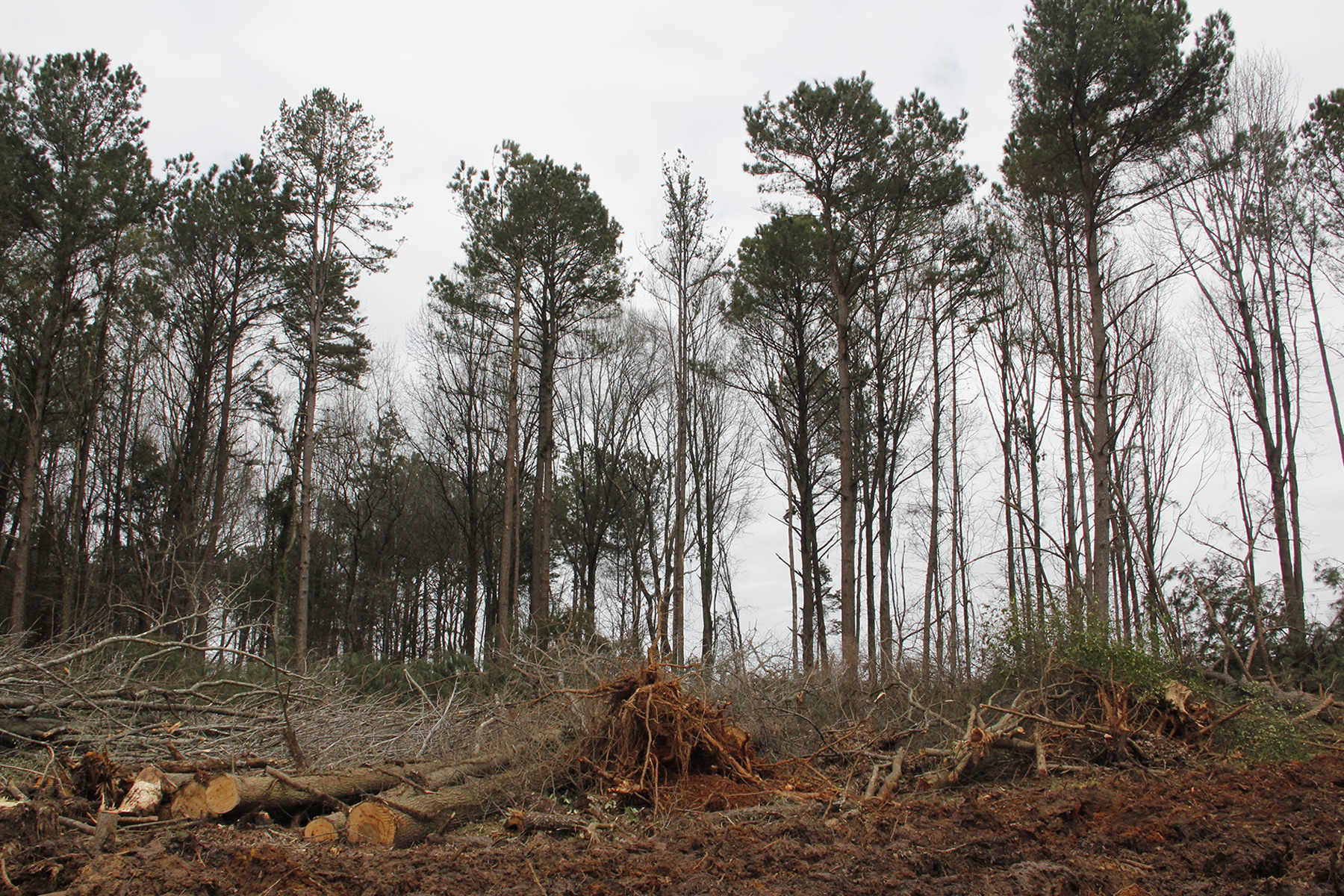There’s no doubt about it, the number of mature trees is a source of pride for Matthews. Mature trees increase property value, clean the air, and even increase feelings of well-being. With it’s dense canopy, Matthews has been part of the Arbor Day Foundation’s Tree City USA for 19 years.
As available land decreases, high-density housing is the urban planning fix. With that comes tree loss.
How does Matthews protect its tree canopy?
The Appearance and Tree Advisory Committee provides the opportunity for residents to work together and make recommendations to the town concerning trees. The group meets the third Monday of every month at 7:00 p.m. at the Matthews Community Center, and regularly presents their discussions and findings to the Board of Commissioners at Council meetings.
The Town has documents and mechanisms in place for environmentally-friendly growth as well. Tree Protection and Landscaping Regulations is a 23-page section of the Unified Development Ordinance sets standards and regulations to protect the tree canopy during development.
Depending on the zoning code, developers are required to save 5% or more of the tree canopy. According to the Unified Development Ordinance, R-12 and R-20 have the highest tree save at 20%, and HUC, C-MF, TS have the lowest at 5%. In comparison, Charlotte has a 15% tree save for all commercial development. In residential areas, if the lot has 10% tree coverage then at least 10% must be saved. If the coverage is less than 10% but greater than 5%, then 5% must be saved.
In November 2017, after approval by the Matthews Board of Commissioners, the Town added a Payment-In-Lieu of Fee for tree save. If the property cannot be developed and maintain minimum tree save requirements, the developer must provide proof of hardship to the Town. Once approved, the In-Lieu of Fee is calculated using the tax value and acreage and set aside in a Tree Canopy Fund. The Fund is primarily used for the installation and maintenance of trees on public property. In the event any of the commercial tree save area cannot be protected, trees must be re-planted at 150 percent of the area removed.
Charlotte also has an In-Lieu-Of fee, though their program is slightly different and only available to commercial development. The Pay-In-Lieu monies are pooled and the City purchases wooded areas that will be permanently protected. As of 2016, 65 acres have been purchased, including 15 acres near the McAlpine Creek Greenway. According to one report (2016) the City averages $160,000 a month payment in lieu of.
Current Development and Trees in Matthews
Per town records and approved rezoning projects (found here), eleven residential projects have been approved between February 2017 and April 2019. The largest of those include:
Proffitt Dixon (Old 51/Matthews Mint Hill Road): Zoned ENT, 35.50 acres, +/- 7.06-acre tree save;
Bainbridge (Old 51/Matthews Mint Hill Road): Zoned R-12MF (CD), 30.752 acres, 4.79 acres tree save;
Four Corners Subdivision (Sam Newell and Keziah Road): Zoned R-VS and SRN and R-15 (CD), 26.73 acres and 3.2-acre tree save;
Taft Development (Monroe Road): Zoned R-12 MF (CD) 21.450 AC and a committed 3.22 acres of tree save, though that did not actually happen.
Those four projects total 114.432 acres with a 18.27-acre tree save. Including the other projects, over 177 acres were rezoned. According to plans, the approximate tree save for these projects is just under 27 acres.
How Do We Prevent or Correct Mistakes?
After Taft Development cleared the tree save area on Monroe Road for the future Residences Galleria, tree preservation has been a hot topic in town. How does Matthews enforce rezoning and tree save agreements?
According to the Town of Matthews’ Unified Development Ordinance (pages 2-12 and 2-13) violations of the tree protection or landscaping provisions approved by the Town is subject to any one or combination of penalties. Penalties are in addition to, and not in lieu of, compliance to all requirements and payment of any financial penalties. One such penalty calculates damages at two dollars ($2.00) per square foot for area damaged or destroyed, not to exceed fifty thousand dollars ($50,000).
Destruction or removal of a tree greater than twelve inches (12”) DBH without prior Town approval may be subject to a civil penalty. The amount is determined using the value of the tree as listed in the most current edition of The Guide for Plant Appraisal, published by the International Society of Arboriculture in conjunction with information provided by the ISA’s Southern Chapter.
Another penalty for not following the UDO by posting a Landscape Guarantee bond, having it approved, then failing to plant the required trees and shrubs as agreed upon with the town can incur a “fine of five hundred dollars ($500.00) per tree or shrub not installed, per day of ongoing violation. The fine is due within ten (10) days of the citation, and is not to exceed twenty thousand dollars ($20,000) per day of violation.” (UDO 155.214. E..4., page 2 - 14)
How do Matthews’ penalties compare to Charlotte? Charlotte's Tree Ordinance includes an additional criminal penalty for Tree Ordinance violations: “Any person who knowingly or willfully violates any section of this chapter shall be guilty of a Class 2 misdemeanor and may, upon conviction thereof, be subject to punishment as provided in section 2-21. This remedy is in addition to any civil penalties that may be assessed.” An additional planting requirement may also be assessed as a nonmonetary penalty.
It’s difficult to determine the percentage of tree cover pre-development from the site plans available on the Town website.
What is apparent? At the current rate of development in Matthews, maintaining the dense, mature tree coverage looks to be a difficult task.
